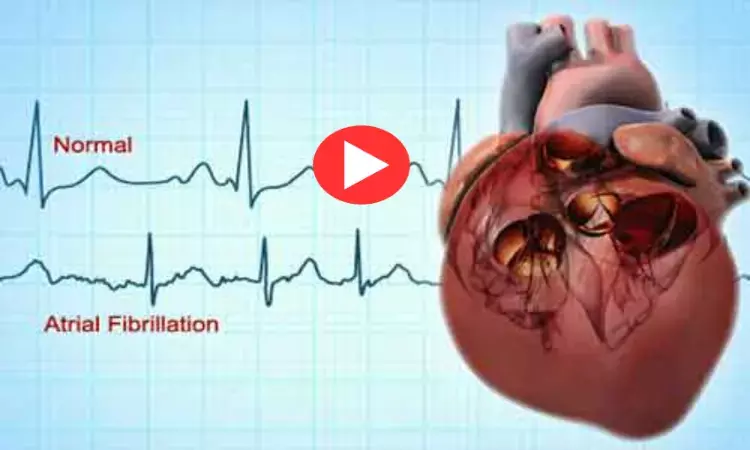- Home
- Medical news & Guidelines
- Anesthesiology
- Cardiology and CTVS
- Critical Care
- Dentistry
- Dermatology
- Diabetes and Endocrinology
- ENT
- Gastroenterology
- Medicine
- Nephrology
- Neurology
- Obstretics-Gynaecology
- Oncology
- Ophthalmology
- Orthopaedics
- Pediatrics-Neonatology
- Psychiatry
- Pulmonology
- Radiology
- Surgery
- Urology
- Laboratory Medicine
- Diet
- Nursing
- Paramedical
- Physiotherapy
- Health news
- Fact Check
- Bone Health Fact Check
- Brain Health Fact Check
- Cancer Related Fact Check
- Child Care Fact Check
- Dental and oral health fact check
- Diabetes and metabolic health fact check
- Diet and Nutrition Fact Check
- Eye and ENT Care Fact Check
- Fitness fact check
- Gut health fact check
- Heart health fact check
- Kidney health fact check
- Medical education fact check
- Men's health fact check
- Respiratory fact check
- Skin and hair care fact check
- Vaccine and Immunization fact check
- Women's health fact check
- AYUSH
- State News
- Andaman and Nicobar Islands
- Andhra Pradesh
- Arunachal Pradesh
- Assam
- Bihar
- Chandigarh
- Chattisgarh
- Dadra and Nagar Haveli
- Daman and Diu
- Delhi
- Goa
- Gujarat
- Haryana
- Himachal Pradesh
- Jammu & Kashmir
- Jharkhand
- Karnataka
- Kerala
- Ladakh
- Lakshadweep
- Madhya Pradesh
- Maharashtra
- Manipur
- Meghalaya
- Mizoram
- Nagaland
- Odisha
- Puducherry
- Punjab
- Rajasthan
- Sikkim
- Tamil Nadu
- Telangana
- Tripura
- Uttar Pradesh
- Uttrakhand
- West Bengal
- Medical Education
- Industry
Both cardiac and non-cardiac comorbidities tied to adverse outcomes in atrial fibrillation: Study

UK: In a recent study in the journal BMC Medicine, the researchers identified three main clusters in European atrial fibrillation (AF) patients. The clusters were -- older patients with non-cardiac comorbidities, older patients with cardiac comorbidities, and a younger, low-risk group. Both cardiac and non-cardiac comorbidities were associated with a greater risk of adverse outcomes.
Atrial fibrillation is a cardiovascular condition which has a multifactorial origin, with the involvement of several cardiovascular (CV) and non-CV risk factors and comorbidities contributing significantly to the development of incident AF. Epidemiological studies in AF show that clinical complexity increase the risk of major adverse outcomes. Marco Proietti, University of Liverpool and Liverpool Heart & Chest Hospital, Liverpool, UK, and colleagues aimed to describe European AF patients' clinical phenotypes and analyse the differential clinical course.
For this purpose, the researchers performed a hierarchical cluster analysis based on Ward's Method and Squared Euclidean Distance using 22 clinical binary variables, identifying the optimal number of clusters. They also investigated differences in nvestigated differences in clinical management, use of healthcare resources and outcomes in a cohort of European AF patients from a Europe-wide observational registry. A total of 9363 were available for this analysis.
The study revealed the following findings:
- Three clusters were identified: Cluster 1 (n = 3634; 38.8%) characterized by older patients and prevalent non-cardiac comorbidities; Cluster 2 (n = 2774; 29.6%) characterized by younger patients with low prevalence of comorbidities; Cluster 3 (n = 2955;31.6%) characterized by patients' prevalent cardiovascular risk factors/comorbidities.
- Over a mean follow-up of 22.5 months, Cluster 3 had the highest rate of cardiovascular events, all-cause death, and the composite outcome (combining the previous two) compared to Cluster 1 and Cluster 2.
- An adjusted Cox regression showed that compared to Cluster 2, Cluster 3 (hazard ratio (HR) 2.87; HR 3.42; HR 2.79, and Cluster 1 (HR 1.88; HR 2.50; HR 2.09) reported a higher risk for the three outcomes respectively.
"In our study of European AF patients, we identified three main clusters, differentiated by differential presence of comorbidities," wrote the authors. "Both non-cardiac and cardiac comorbidities clusters were found to be associated with an increased risk of major adverse outcomes."
Reference:
Proietti, M., Vitolo, M., Harrison, S.L. et al. Impact of clinical phenotypes on management and outcomes in European atrial fibrillation patients: a report from the ESC-EHRA EURObservational Research Programme in AF (EORP-AF) General Long-Term Registry. BMC Med 19, 256 (2021). https://doi.org/10.1186/s12916-021-02120-3
Dr Kamal Kant Kohli-MBBS, DTCD- a chest specialist with more than 30 years of practice and a flair for writing clinical articles, Dr Kamal Kant Kohli joined Medical Dialogues as a Chief Editor of Medical News. Besides writing articles, as an editor, he proofreads and verifies all the medical content published on Medical Dialogues including those coming from journals, studies,medical conferences,guidelines etc. Email: drkohli@medicaldialogues.in. Contact no. 011-43720751


